-
Posts
1,231 -
Joined
-
Last visited
-
Days Won
7
Content Type
Profiles
Forums
Blogs
Gallery
Downloads
Media Demo
Events
Posts posted by Rick Junkin
-
-
On 3/3/2022 at 10:48 PM, toto said:
If I remember correctly, the non-WAAS unit uses an 8mb data card, but the WAAS unit uses 16mb. You might just be able to pop out the card to see.
The 8mb non-WAAS card has a green label, the 16mb card has an orange label. They are not interchangeable.
Cheers,
Rick -
On 2/18/2022 at 12:37 AM, xcrmckenna said:
The sidewinder I have is the old style that chews up the front tire, drove me nuts.
I’ve found that my Sidewinder works great as long as the nose tire is at 49PSI. But let it be a few pounds shy of that and the friction drive can slip without a good amount of extra leveraged pressure against the tire.
I have a beveled lip on the front of my hangar that I can still get over with full tanks and a bit of my leaning hard against the cowling. I’ll take a picture and measure it to give you a little more quantified idea of what the Sidewinder does in my case.
Cheers,
Rick-
 1
1
-
-
9 hours ago, hais said:
Is this a good excuse to fly 4400nm round trip? I'm tempted ... what is the theme?
@hais The theme this year is the "PAVE" (Pilot, Aircraft, enVironment, External Factors) risk mitigation model and our Monday stage presentations are organized within that model. You can visit the Mooney Summit web page for more details on who we are and what we have planned. Here's a direct link to the draft agenda for the event. We're still working to confirm all of our presenters so the topics may change a bit but any changes will stay within the PAVE theme.
As Anthony @carusoam said, you'll have opportunity to meet and socialize with a lot of the people you "know" but perhaps haven't yet met, including the folks participating as presenters. The event is as much about making and renewing these friendships as it is about participating in the seminars - much of the learning and enjoyment comes through the informal conversations and sharing of stories, and this helps to make us all better people as well as better pilots. You won't be disappointed!
Cheers,
Rick-
 1
1
-
 1
1
-
-
George Braly interview begins at 16:42.
Cheers,
Rick -
1 hour ago, carusoam said:
Hey Rick,
See if I’m still registered from the last time….

Best regards,
-a-
Hi Anthony,
Everyone who requested their registration be held on account was issued a coupon code to use when they registered this year. All previous registrations were cancelled so we could start fresh this year - managing the admin of carrying registrations from year to year had become too burdensome and time consuming to keep it all straight.
You received an email with your coupon code. If you can’t find it I can look it up and send it to you again.
Anyone who can’t find their code can email me at rick.junkin@mooneysummit.com with your request and I’ll get it to you.
Cheers,
Rick-
 1
1
-
-
Registration is open for Mooney Summit VIII !!!
Go to www.mooneysummit.com to register and get the latest information on what is planned for this year's event, from roundtable discussions to stage presentations to social activities. I'll be updating our list of raffle prizes and silent auction auction items as sponsors continue to send support.
A link for block hotel reservations will be provided in your registration confirmation email.
Feel free to contact me with questions either here through Mooneyspace or directly at rick.junkin@mooneysummit.com or by text or voice at (314) 283-5718. You may need to leave a message, but I'll call you right back.
Cheers,
Rick-
 3
3
-
-
This is a teaser for registration for this year's Mooney Summit, which will be opening in the next few days. This year’s Summit is September 18-19 2022 at Peter O Knight Airport (KTPF) and the Tampa Theatre.
Some exciting changes this year:
1. New venue! Enjoy Tampa and the historic Tampa Theatre this year.
2. Online Silent Auction! The Silent Auction will be open to all, not just those in attendance. Watch here on MooneySpace for details on what's up for auction and how to bid.
3. Online raffle - no more tickets to keep track of! Raffle will still be for registered attendees only.Things that haven't changed:
1. World class subject matter expert presentations
2. Roundtable discussions of all your favorite topics in the hangar on Airport Day
3. Social events on both days with all of the friends we haven't seen for a couple of years.I'm tying up the last few loose ends for the online registration page and will have it live very soon. Stay tuned!
Cheers,
Rick-
 3
3
-
-
-
4 hours ago, Dickard said:
I should have titled it, "Dear God! What have I done??"
HA! Fortunately that soon passes as you immerse yourself in learning your new airplane. Sounds like you are well on your way in that regard.
Welcome to the club, and yes, reserve a special place in your wallet labeled "Mooney Pass-Through Money" and prepare for it to be mostly empty most of the time. You're gonna love it.
Cheers,
Rick-
 1
1
-
-
On behalf of your Mooney Summit Board of Directors I am happy to announce we have scheduled Mooney Summit VIII for September 18-19 2022.
We will base the event at Peter O. Knight Airport (KTPF) in Tampa FL. Airport Day is Sunday the 18th, and stage seminars will be held Monday the 19th followed by the presentation dinner Monday evening. We are finalizing the contracts for our hotel blocks and will open Summit registration as soon as those contracts are in place. We have secured a unique venue for this year’s event that we think you’ll enjoy. Take a look here! We've shifted the event to Sunday-Monday to adjust to venue availability.
We have opted for a two day format this year featuring presentations organized in a “PAVE” theme that will appeal to all, as well as Mooney-specific presentations on operations and maintenance.
I’m really looking forward to seeing everyone again as we hear from some of the best in aviation, socialize and share our collective experiences in pursuit of “Bettering the Breed”.
Registration will open soon. Watch for updates here!
Cheers,
Rick
-
 2
2
-
-
On 1/28/2022 at 5:26 PM, M20 Ogler said:
@M20 Ogler Take a close look at your elevators. Are they symmetrical?
I don't trust the picture, but if you were 100% square on when yo took it then the right elevator appears to be deflected up with respect to the left elevator, which would induce a right roll. You can easily measure this with a digital level, just make sure the elevator doesn't move between measuring the left and the right. If it's bad enough you may be able to eyeball it.
Mine were out of symmetry by about a degree and gave me a roll rate of about 2-3 degrees per second. It went away when I had them adjusted.
Let us know what you find!
Cheers,
Rick -
14 minutes ago, BravoWhiskey said:
Interesting. This document seems to contradict some operating procedures for shutdown for me. I run at 1800rpm to do my after landing mag drop then I need 5 minute cool down for the turbo. While the procedures on this document make sense I don’t see my engine on the list. Having said that I have not been running at 1000-12000 after startup I’ve been at lower settings.
It's always interesting when this comes up.
The M20M POH and the Lycoming Operator's Manual for TIO-540 series engines differ on both starting and shutdown procedures. The POH is "binding" from a regulatory standpoint, but that doesn't preclude us from using better procedures for engine operation learned over time and codified in the engine manufacturer's documentation. Case in point is the POH cruise settings for the M20M - no one uses them anymore because of the learning that occurred through operating at those settings.
Starting:
Mooney POH says to idle at 700-750 RPM for warm-up
Lycoming says to idle at 1000-1200 RPM for warm-upThe starting procedure itself is different between the two as well - the POH has you cranking with the mixture full rich, Lycoming has you start cranking at idle/cut off and advance the mixture as the engine starts. I've used both with varying degrees of success and ultimately found what works best for me and my engine, which not surprisingly ended up being a combination of the two. I warm up at 900-1000 RPM with a leaned mixture and proceed once the oil is above 100 and the CHTs are at 250.
Shut down:
Mooney POH includes a CAUTION that states you need to operate the engine at idle (below 1000RPM) for 5 minutes to allow for turbocharger cool-down. Taxi time can be included in that 5 minutes.
Lycoming says to "idle until there is a decided decrease in cylinder head temperature"So which one is right? Personally I'm past that question. My practice is low power on approach and in the pattern, idle at round-out and into the flair, rarely add much power for taxi, and do my post-flight mag and grounding check at 1000RPM when I reach the chocks. Then I shut down. The intent is to allow things to cool down and this practice accomplishes that.
My suggestion is use the documentation as guidance, understand the intent, and execute in a way that works and is easily repeatable every time you fly. When you learn something new, see if it makes sense to you and if it does, incorporate your learning to improve your practices. But don't skip the "does it make sense" step and make sure what you've heard/learned applies to you and your airplane.
Cheers,
Rick-
 1
1
-
-
On 2/3/2022 at 8:37 PM, IslandPilot said:
For classic VOR and ILS navigation the plane tracks good.
Does the CDI center and the autopilot accurately correct for the winds in VLOC? As Anthony @carusoam said the HSI should be getting the same nav signal from the 530W whether you have VLOC or GPS selected on the 530W so if there is a difference in the way the KAP150 acts in in GPS and VLOC I see your reasoning for questioning the 530W soft config. I sent you a PM with some tech data that may help. For clarification, is your A/P giving you steering to parallel the magenta line, or is the autopilot steering diverging from the magenta line?
This is a Master of the Obvious thing maybe, but the KAP150 will initially steer you to the uncorrected course you have selected on the HSI, and then add in a wind correction once it starts sensing drift from the desired course. I don't think this is what you're seeing from what you've described but wanted to throw it out there anyway. There is also an adjustment on the KAP150 to center up the CDI, but if your A/P ILS steering is centered I wouldn't mess with it. The adjustment requires a long thin flat head screwdriver is reached through a hole on the front left side of the A/P computer faceplate. Again, if you're seeing a stabilized diverging drift away from the course set on the HSI this adjustment isn't appropriate. However, if the CDI isn't centered properly when you're on the magenta line this could be the adjustment you need.
Cheers,
Rick-
 1
1
-
-
On 2/3/2022 at 7:54 AM, BravoWhiskey said:
What kind of FF do some of you use for ground opps?
I see about 2gph fuel flow at 800RPM while leaned for taxi. The engine stumbles at ~950RPM if I don't enrich the mixture.
I run Tempest fine wire plugs URHB32S and standard Slick mags. With proper priming my engine starts like a car, never more than a few blades.
Cheers,
Rick-
 2
2
-
-
On 2/4/2022 at 3:51 AM, carusoam said:
Rick,
Go direct to the compass manufacturer…
They have those things and other options at very small prices…
https://www.airpathcompass.com
-a-
Thanks Anthony, I'll give them a call. Their website is lacking any parts listing or ordering capability, and all of the prices for what they do have on the site are $0.00. It looks like they aren't maintaining the site, I got a message that they can't accept online orders right now and to contact them directly. Phone number is (314) 739-8117.
Cheers,
Rick-
 1
1
-
-
The info in this article may help - it amplifies @Brandt's recommendation. There are recommended procedures for both Continentals and Lycomings - I've used the recommendations on my TIO-540 and they work well. https://www.aviationconsumer.com/maintenance/hot-starting-science-and-art/
Cheers,
Rick-
 1
1
-
-
Anybody have one of these they can part with?

Cheers,
Rick -
On 1/30/2022 at 7:40 PM, IFLYIFR said:
Option 3 - connect the heater to a timer that turns on every morning for 5 or 6 hours then turns off (more convenient but the engine would be heated then re-cooled every day).
Here's an Option 3+. Add an Engine Saver to the mix to keep the relative humidity inside the engine low enough to prevent condensation. It's my personal year round over-kill solution, especially when I know I won't be flying for a few weeks. I hook it up and leave it on all of the time, and dry the desiccant every few weeks or so. If you defeat internal condensation then the heater cycling with a timer becomes executable and practical if you don't want to leave it on all of the time. It's a compromise solution for your unique situation. An engine dehydrator is also recommended for 24/7 preheating by Mike Busch in the last two paragraphs of this article: https://www.aopa.org/news-and-media/all-news/2019/april/pilot/savvy-maintenance-crimes-and-misdemeanors
Here's a link to the Engine Saver at Aircraft Spruce: https://www.aircraftspruce.com/catalog/eppages/engsaver.php

And here's an Aviation Consumer article discussing the effectiveness of engine dehydrators: https://www.aviationconsumer.com/maintenance/engine-dehydrators-engine-saver-prevails/
That link may be a subscriber-only link for Aviation Consumer, so let me know if you can't get to it and I'll get it to you another way.
Cheers,
Rick-
 1
1
-
-
I've had several people here ask about our CH2000, usually something like "what the heck is a CH2000", and one person thought other folks would be interested and recommended I post the info. So here it is.
The CH2000 was derived from the Zenith CH640 homebuilt and was produced by Aircraft Manufacturing and Development (AMD) as a normal category certified airplane for a number of years, ending around 2006 when the economy tanked. It is still supported by Zenair our of Canada. The airplane is pretty much a low wing C152 with better performance and a much bigger and better equipped cockpit with excellent visibility. It’s a decent primary and instrument trainer but it’s very sensitive in pitch trim in that small movement of the trim wheel imparts a much larger pitch trim change than a Cessna. It’s fine once a new pilot gets used to it. Pretty low wing loading so it does require full time attention. Ours is the Alarus configuration and is equipped for instrument training. No autopilot and not a good hands-off flyer so using it for instrument training encourages a good instrument crosscheck and excellent preflight preparation/cockpit organization to minimize heads down time.
It has well-behaved stall characteristics with the fat wing. Vs is 48KIAS and Vso is 30KIAS with full flaps, but I typically use half flaps and 40KIAS. The split flaps are more effectively drag devices than lift devices and I don't use more than half flaps for normal ops, but can be 2,000’ AGL on less than 1 mile final and put it on the numbers on speed with full flaps if needed. No flaps for takeoff, using flaps increases the takeoff roll.
It climbs Vy of 65KIAS and ~750fpm at full gross and 1,000’DA and and cruises 90KIAS @2600RPM and 6.5gph. I plan for 105KTAS for cruise at 6,000MSL. Redline is 2800RPM.
I haven’t taken anyone through primary training yet but have done quite a number of introductory flights for friends and their kids and they’ve all done well with it. I’ve used it to conduct a few flight reviews and the guys who flew it liked it too. It's a very simple and fun to fly airplane.
Ours is a 2004 and was owned by a flight school most of its life so took some abuse for its first 1400 hours or so, but the airplane is still solid. I'll qualify solid a bit - it has a homebuilt feel to it. That isn't a bad thing at all, just different. It's lighter on the controls and feels more responsive than other typical trainers, and the interior appointments are very simple and basic. The engine was IRAN'd for sudden stoppage at about 1250 hours (not your typical prop strike, a student ran it into a snow bank) and the cylinders were overhauled and chromed right before we bought it. We upgraded the GNS430W and added a GTX335 and a JPI900 with all the sensors for use in teaching good engine management in primary training. We have the best instrumented O-235 around. :-)
For those interested more info can be found at www.newplane.com.
Cheers,
Rick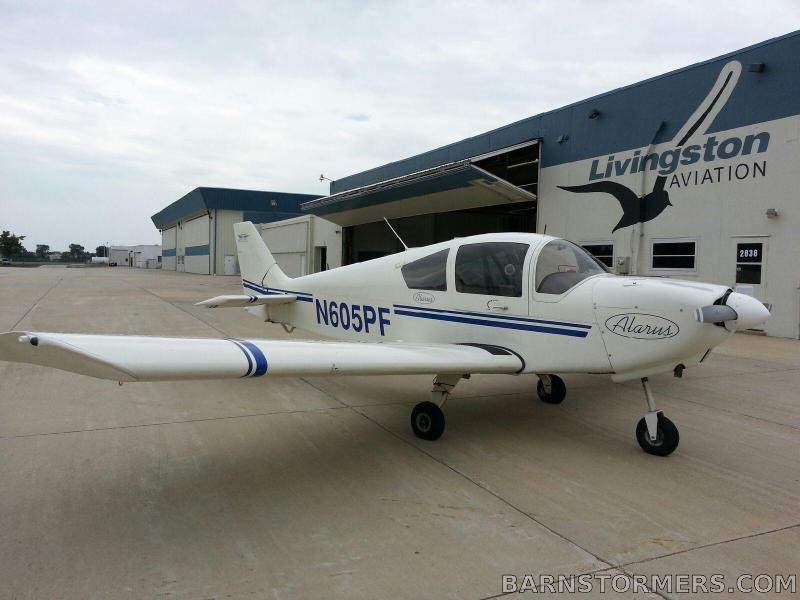
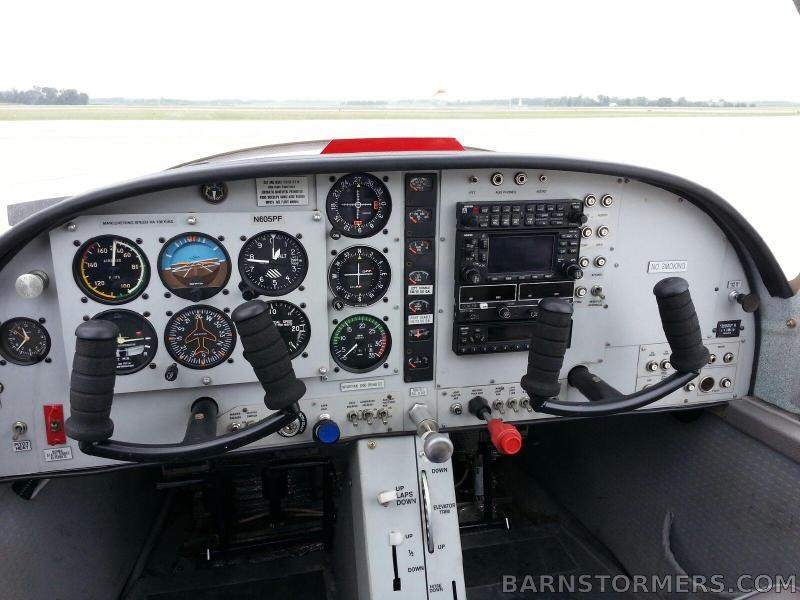
Original panel configuration
New panel configuration with JPI EDM900
Lots of shoulder room and easy in and out with the gull wing doors
Size relative to my Bravo.
-
 2
2
-
-
1 hour ago, Candy man said:
Did I do everything correctly? I’m on the ground unharmed, the plane is undamaged, and I was never scared or worried. I will be purchasing a handheld, and was wondering do I need to fill out paperwork or inform the FAA?
I agree with @toto - Good assessment of the situation, you considered the risks, had a plan to mitigate risk and deal with potential outcomes with the opportunity to complete your mission with a risk level acceptable to you. Another pilot may have done it differently as there is more than one right answer with varying risk tolerances. You executed your well considered plan to a successful outcome. Well done.
The only thing I suggest is remembering to squawk 7600 in the event you do go NORDO and your telephone plan doesn't work. I had a similar situation and even with very low battery power with everything else turned off my transponder worked and alerted the tower to give me light gun signals.
I'd file an ASRS/ NASA report https://asrs.arc.nasa.gov/report/caveat.html?formType=general but you don't need to file anything with the FAA unless the FAA contacts you and requests one. There are some good threads here on what happens when an emergency is declared and what paperwork it generates and for whom. The tower folks will probably be filing something as other traffic was delayed/impacted although I don't recall if that only applies if scheduled air traffic is affected.
Added: I have this handheld https://www.sportys.com/pj2-handheld-com-radio.html, the PJ2 from Sporty's. Its bulkier than other radios but is inexpensive and dirt simple to operate. You plug your headset directly into it. I keep it readily accessible in the right seat back pocket. Range will be limited with a handheld but you can certainly talk to tower or broadcast on CTAF. Here's an article from AVweb you may find useful https://www.avweb.com/avionics/avionics-bootcamp-handheld-transceivers/.
Cheers,
Rick-
 1
1
-
-
The voltage regulator in my M20M serial number #27-0019 is part number 800397-503 and is actually two regulators attached to a single mounting plate. As I recall I had to remove the individual units from the mounting plate to find the adjustment screws.
Note that this particular regulator is not the one for my serial number range as called out in the parts manual. It works, and I'm not asking any more questions as the "correct" part is unobtainium.
Cheers,
Rick -
17 hours ago, PilotX said:
Sounds like the rate is $325ish.
This also gives prospective Mooney owner/pilots a good gauge of M20M ownership costs. My fully encumbered hourly cost of operation based on a minimum of 120 hours per year is right at $350/hour. Add another 100hr/year and it drops to $250/hr, but of course adds an additional $25K to the annual encumbered operating costs.
I'm with @carusoam, the insurance policy must be interesting/pricey. Only named insureds permitted?
Cheers,
Rick-
 1
1
-
-
Bottom Line Up Front (BLUF) - The Precise Flight X3 demand conserver will work with the early Scott/Avox altitude adjusting factory oxygen systems at oxygen altitudes based on inflight pressure measurements I made however Precise Flight has not tested them and therefore can’t recommend or ensure compatibility.
Details: The X3 requires a minimum delivery pressure of 22PSI and a maximum of 35PSI. I measured a delivery pressure of 8.5PSI on the ground at 1,000MSL and 23.5PSI at 12,500MSL in my Bravo with the Avox regulator part number 803216-03. So the altitude compensation works, and the delivery pressure at 12.5K exceeds the minimum required. An extrapolation to 25K using the non-linear atmospheric pressure lapse rate above 10K puts the delivery pressure right at the 35PSI maximum limit at 25K.
I’ll provide more info on how they perform with the altitude compensating systems once I’ve used them for a while. I’ll be flying with my current flow metered cannulas on board as a backup until then.
Cheers,
Rick-
 1
1
-
-
On 12/25/2021 at 1:09 PM, Ragsf15e said:
I used the one from Sportys last year. It was free, but very dry. I got what I paid for. They did take care of the paperwork, but I think that cost me $20. Even though it’s free, I’d have a hard time using it again because of how dry it was. If you find one that’s engaging and well done that’s not too expensive, I’m all ears!
I used Sporty's eFIRC last year as well. I'm not regularly engaged in active instruction and appreciated the review, along with the info on the changes that occurred over the last two years. Most I was aware of, some I was not. I'm one to read everything but not always listen to all of the audio so I was slowed up by the minimum time limits on some of the modules. I didn't mind, it encouraged me to listen to more of the case studies. I thought it was a pretty good course, in comparison to some of the annual Instrument Refresher Courses I attended over the years. I needed the review and got what I was looking for, so use that as your gauge.
The course is still free, but the Airman Certification Representative (ACR) service is now $49.94. A convenience to be sure but saves me the trip to the FSDO.
Cheers,
Rick-
 1
1
-





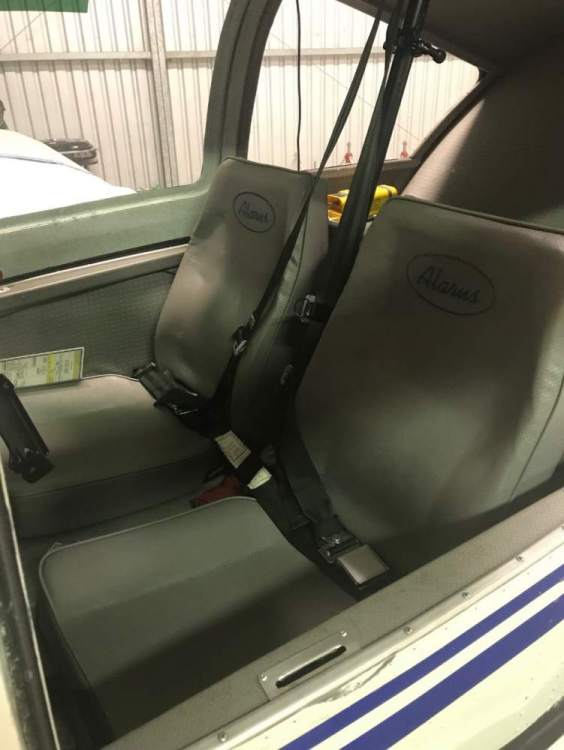

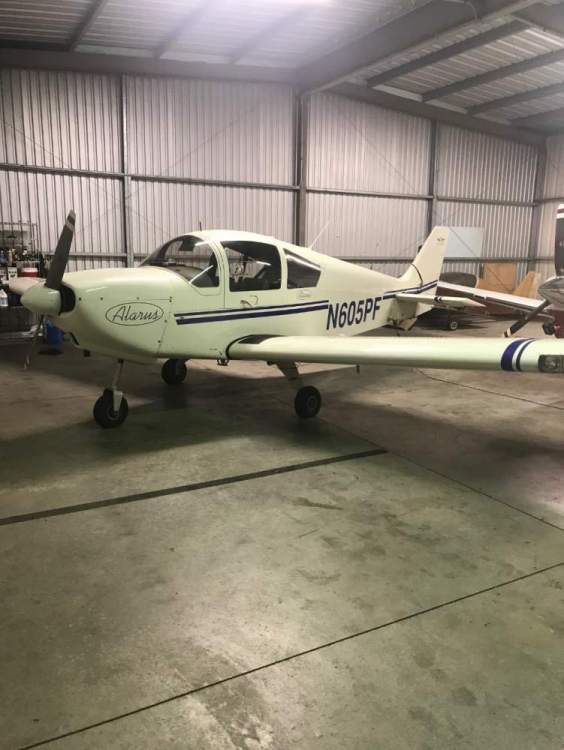
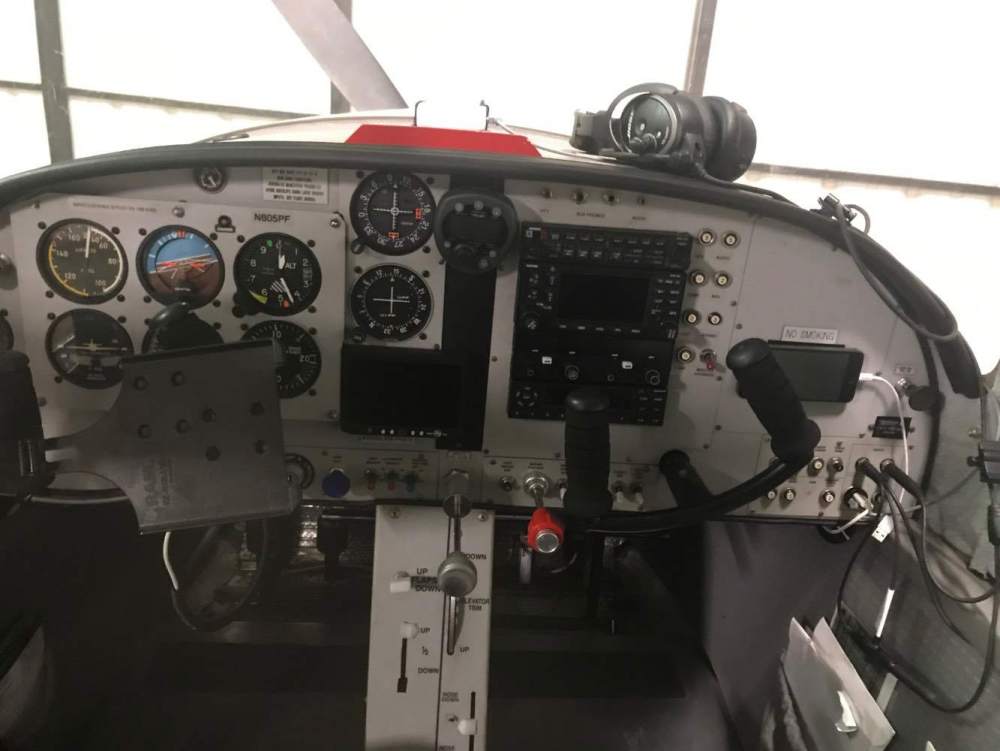
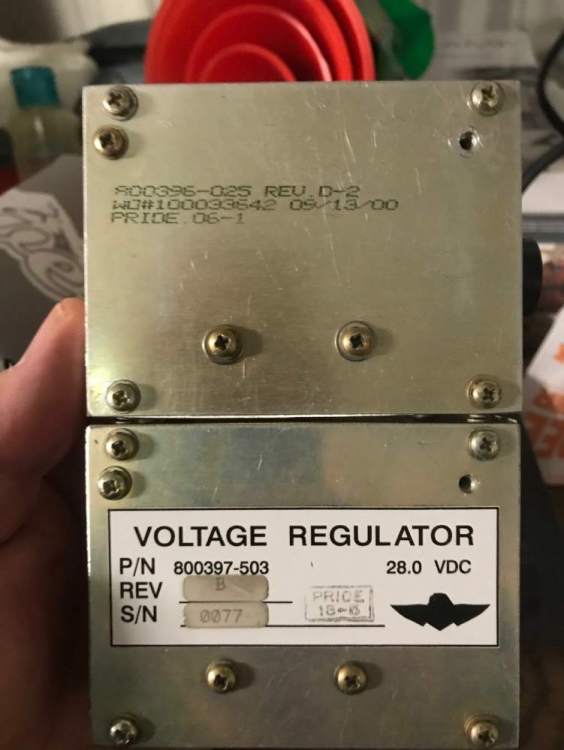

Oxygen Tanks or Oxygen Concentrator?
in Vintage Mooneys (pre-J models)
Posted
This has come up a number of times here. Take a look through these posts/threads and you'll get a good idea of what's what.
https://mooneyspace.com/search/?q=concentrator&quick=1
Cheers,
Rick